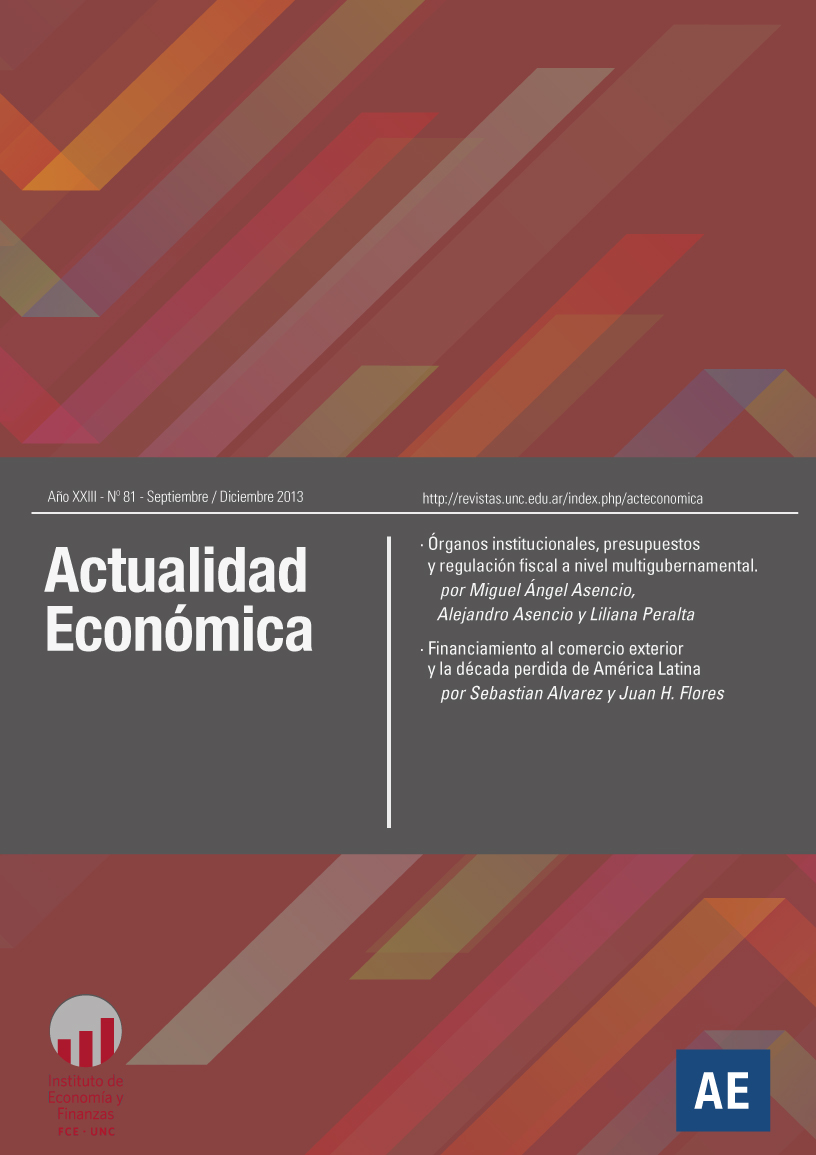Institutional bodies, budgets and fiscal regulation at multigovernmental level
Keywords:
budget processes, fiscal coordination, fiscal institutionsAbstract
In previous articles we have referred to the existence and role of institutional mechanisms and institutions that play regulatory and rationalizing roles in the budgetary processes, on the one hand, or in the fiscal coordination of actions of different levels of government, on the other. Both instances are interrelated, in spite of not being equivalent, in the same way that there is no equivalence with organ institutions of essentially "vigilant" type, of monitoring or auditing, although several and inevitable points of correlation or contact are visible. Here we will expand the analysis of the intervening institutions or those that influence the budget cycle or process, considering, however, that their existence can be imagined in more than one level of government, given that they also happen to interbreed with the improvement of the system of relations intergovernmental prosecutors in federative countries.Downloads
References
Asensio, M. A. (2009). Insituciones fiscales y presupuesto público, Editorial Buyatti, Buenos Aires.
Debrun, X; Hauner, D. y Kumar, M. (2009). “Independent Fiscal Agencies”, Journal of Economic Surveys,
Vol. 23, N° 1, pp. 44-81.
Calmfors, L. y Wren Lewis, S. (2011). “What Should Fiscal Councils Do?”, Discussion Paper Series, Department of Economics, University of Oxford, February, Number 537.
Wyplosz, C. (2005). “Fiscal Policy: Institutions versus Rules”, National Institute Economic Review N° 191, January.
Wyplosz, C. (2008). “Fiscal policy councils: Unlovable or just unloved”, Swedish Economic Policy Review 15, 173-192.
Government of New South Wales (NSW); Australia: “Legislative Unit for Expenditures”, Mimeo.
Wren-Lewis, S. (2012). “Fiscal Councils Webpage”, July, http://www.economics.ox.ac.uk/members/ simon.wren-lewis/fc/Fiscal_Councils.htm
Downloads
Published
Issue
Section
License
Those authors who have published with this journal, accept the following terms:
Authors will conserve their copyright and guarantee the magazine the right of first publication of their work, which will be simultaneously subject to the Creative Commons Attribution-NonCommercial-NoDerivative 4.0 International License that allows third parties to share the work as long as the author and first publication of this magazine are indicated.
Authors may adopt other non-exclusive license agreements to distribute the published version of the work (e.g., deposit it in an institutional telematic archive or publish it in a monographic volume) provided that the initial publication in this journal is indicated.
Authors are allowed and encouraged to disseminate their work through the Internet (e.g., in institutional telematic archives or on their website) before and during the submission process, which may lead to interesting exchanges and increase citations of the published work. (See The effect of open access)









